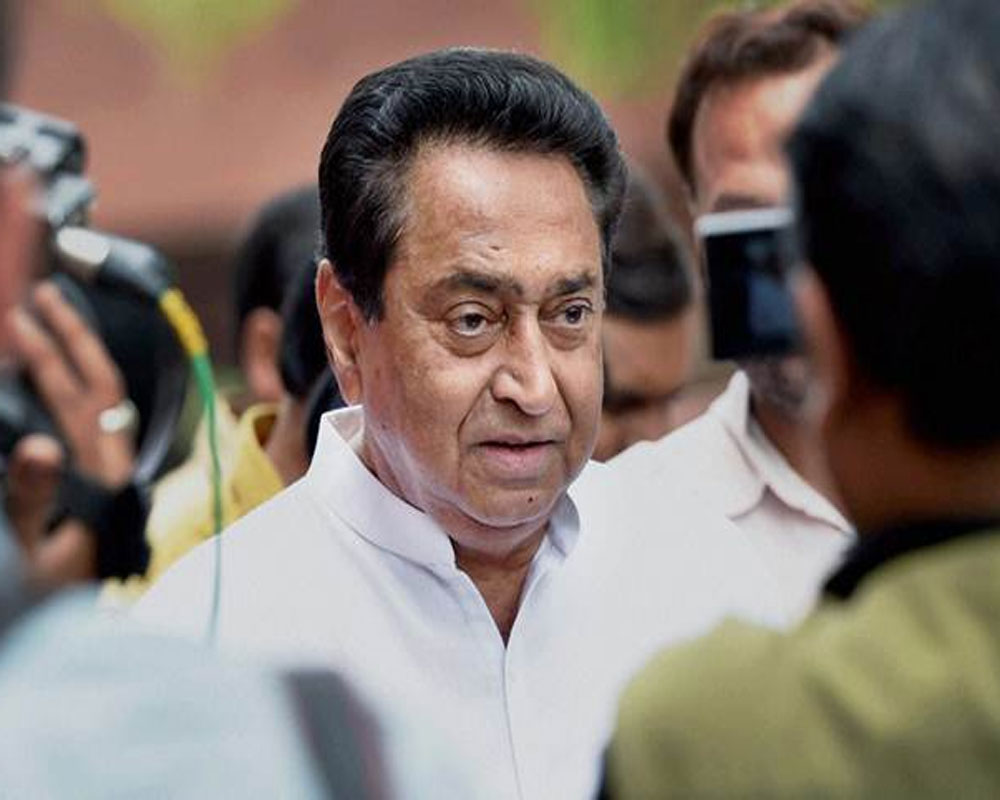The incumbent CM of Madhya Pradesh, Kamal Nath’s name has surfaced time and again in matters regarding the 1984 anti-Sikh carnage. However, Kamal Nath claimed each and every time that he is innocent and one time he went to the extent of saying that he should be applauded for his services during the 1984 anti-Sikh riots.
In 2016, in an interview given to NDTV when the interviewer asked Kamal Nath, “Who sent you to the Gurudwara Rakab Ganj?” Kamal Nath replied, “I was sitting with some Congress people.” The interviewer interjected and asked, “Were you sent by Rajiv Gandhi?”. “No,”replied Kamal Nath. He went on to add, “I was sitting somewhere and with some Congress people and somebody got a phone call and said we must go…” The destination discussed here is Gurudwara Rakab Ganj.
However, now a video has surfaced where Kamal Nath in an interview with The Print is saying, “I was with Mr. Rajiv Gandhi, who had just become Prime Minister, and he got a phone call that Gurudwara Rakab Ganj being… the Congress people have congregated there and they are going to attack it. So he told me Kamal go there and stop all this nonsense.”
Kamal Nath essentially contradicts himself within the span of three years. In one interview he says that Rajiv Gandhi had not sent him to Gurudwara Rakab Ganj, in another interview he says just the opposite of that.
The Sikh community was protesting when Kamal Nath was appointed as the next CM of the state was announced.
Heard @RahulGandhi planning to appointment 84 Sikh Massacre Murdrer Kamalnath as CM. He is the same person who Burned Gurudwara Rakbaganj ( Hind di Chadar Guru Teg Bhadur ji cremation place) . It exposing Congress Anti Sikh face once again
— Tajinder Bagga (Modi Ka Parivar) (@TajinderBagga) December 12, 2018
Whn Rahul Gandhi appointed 1984 Sikh Massacre Murdrer Kamal nath as incharge of Punjab assembly election, @capt_amarinder protested till his removal. If RaGa still appoint Sikh Murderer Kamalnath as CM, Captain sahab should protest & Resign from Congress
— Tajinder Bagga (Modi Ka Parivar) (@TajinderBagga) December 13, 2018
Kamal Nath’s questionable conduct in the 1984 anti-Sikh riot case is well documented by Manoj Mitta and HS Phoolka in their book titled- When A Tree Shook Delhi. In a chapter of the book – A Tale of two Gurudwaras– the authors write, “Rakab Ganj Gurudwara, despite being across the street from Parliament House, was subjected to a prolonged siege in which its periphery was damaged, and two Sikhs were roasted alive. The attack on Rakab Ganj Gurudwara was also remarkable for the fact that it was probably the first, and so far, the only instance in the history of mass violence in India, where a political leader admitted to being present on the spot. And this instance occurred in the immediate vicinity of India’s parliament.” The leader in question here is none other than senior Congress leader and Madhya Pradesh Chief Minister- Kamal Nath.
Rakab ganj Gurudwara was close to Teen Murti Bhawan where the dead body of Indira Gandhi was kept for darshan. Mourners had been crying “khoon ka badla khoon (blood for blood)”. People were certain about the presence of Sikhs at Rakab ganj Gurudwara, and therefore it came to be the target of the mob.
What’s shocking about all this is the presence of Kamal Nath at Rakab ganj Gurudwara where two Sikhs were burned to death. Kamal Nath’s presence there was confirmed by two of the senior-most officers, Commissioner Subhash Tandan, and Additional Commissioner Guatam Kaul, as also by an independent source, The Indian Express reporter, Sanjay Suri. According to Suri, Kamal Nath was ‘controlling the crowd’ which he said was ‘looking to him for directions.’
In his book titled 1984: The Anti-Sikh Violence and After, Sanjay Suri writes, “Kamal Nath and that crowd had a connection; he signalled, they listened. And they were only likely to respond to him if they were from the Congress party and accepted him as their leader, not just any leader.”
Manoj Mitta and HS Phoolka in their book ‘When A Tree Shook Delhi’ writes that on November 3, The Statesman referred to Kamal Nath’s presence at Rakab Ganj while analyzing the carnage: “Policemen criticised the role of politicians too. Several councillors, they alleged, interceded on behalf of violent mobs when policemen tried to stop arson. Officers wondered what Mr Kamal Nath was doing at Rakab Ganj.” In fact, Kamal Nath himself acknowledges his presence at Rakab ganj Gurudwara when he was served a notice by the Nanavati Commission almost two decades later.
People allege that Kamal Nath has not been punished for his role because of a lackluster approach adopted by the UPA government, and lack of evidence against him. The Nanavati Commission said, “In (the) absence of better evidence, it is not possible for the commission to say that he had in any manner instigated the mob or that he was involved in the attack on the gurdwara.” So, basically he received the benefit of doubt. A proper investigation is required in the matter to clear things, and punish the guilty. Many anti-Sikh riots case accused like Kamal Nath enjoyed political patronage as observed by the Delhi High Court. While reading the judgment against Sajjan Kumar, the Court said, “In the summer of 1947, during partition, several people were massacred. 37 years later Delhi was the witness of a similar tragedy. The accused enjoyed political patronage and escaped trial.” The Delhi High Court also said that there were ‘large-scale efforts’ to protect Kumar.”
Delhi HC's observation on 1984 anti-Sikh riots: It was an extraordinary case where it was going to be impossible to proceed against Sajjan Kumar in normal scheme of things as there appeared to be ongoing large-scale efforts to suppress cases against him by not even recording them
— ANI (@ANI) December 17, 2018
For more details: The brazen lies of Kapil Sibal on Sajjan Kumar
